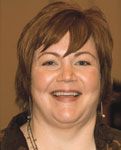Pharmacists key to medication therapy management success
Aetna reports that its MTM programs have worked due to pharmacist interventions

The Aetna study followed approximately 2,400 patients in 2007 who were identified by a drug-based algorithm as prime candidates for an adverse drug event. The control group was a similar set of patients that a prior algorithm identified as not being at higher risk for an ADE. The study will continue through 2008.
"Any pharmacist intervention in MTM made a difference in terms of the number of adverse events we saw," Linda Bagget, Aetna pharmacotherapy specialist, Medicare, told AMCP attendees.
The lower figure is associated with a "low-touch" intervention, a letter to alert the prescriber to a potential ADE that posed little immediate danger. The higher figure comes from "high-touch" interventions where a pharmacist telephoned the prescriber to warn of an immediate risk, such as prescribing a quinolone to a patient currently taking warfarin. Phone calls were followed with a letter outlining the potential conflict in more detail. "We would love to have a fleet of pharmacists to make every intervention high touch," Vernachio said. "But that cuts into the cost effectiveness of the program."
Aetna's current MTM program bears little relationship to the MTM program it first offered in 2006. "We built our program as we went along and learned," Bagget said. "I don't know too many people who knew what they were doing when Part D began."
MTM confusion
One problem is a confusion between MTM programs and MTM services, noted Marissa Schlaifer, director of pharmacy affairs for the Academy of Managed Care Pharmacy. She defined MTM programs as the overall methods used by health plans to optimize therapeutic outcomes. MTM services are the components of MTM programs that are delivered by pharmacists and other healthcare professionals.
AMCP joined with the American Pharmacists Association, the American Society of Consultant Pharmacists, and other groups to create a consensus document to define the elements of a sound MTM program. Program elements that emerged included a patient-centered approach, interdisciplinary teams, a combination of population and individual patient perspectives, flexibility, and evidence-based medicine.
Operational aspects included full documentation and measurement, quality assurance, services tailored for different settings and cultural expectations, and coordination of care.
Focusing on polypharmacy
Focusing on polypharmacy produced no changes in ADE rates, Bagget said. Analysis showed that the number of unique drugs alone did not predict an opportunity for meaningful intervention. The MTM team went back to the literature and Aetna's own claims data. It turned out that a third of hospital admissions among older members could be traced to drug-related problems with warfarin, digoxin, or insulin. In long-term care, nine of the 10 most-dangerous drug interactions involve the same three agents. Theophylline-quinolone interactions are in 10th place.
Aetna found that patients under the age of 60 were just as likely to suffer drug-drug interactions as patients over the age of 80. The plan rewrote its MTM screening algorithm to focus on drug-drug interactions, Vernachio said. It was that drug-drug focus that improved patient outcomes and avoided costs.
"A pharmacist and pharmacy-based program is critical to the success of MTM," she said. Pharmacy has the broad perspective to identify drug-drug interactions across multiple providers. And pharmacists have the training and skills to identify potential problems quickly and stratify risk factors efficiently."